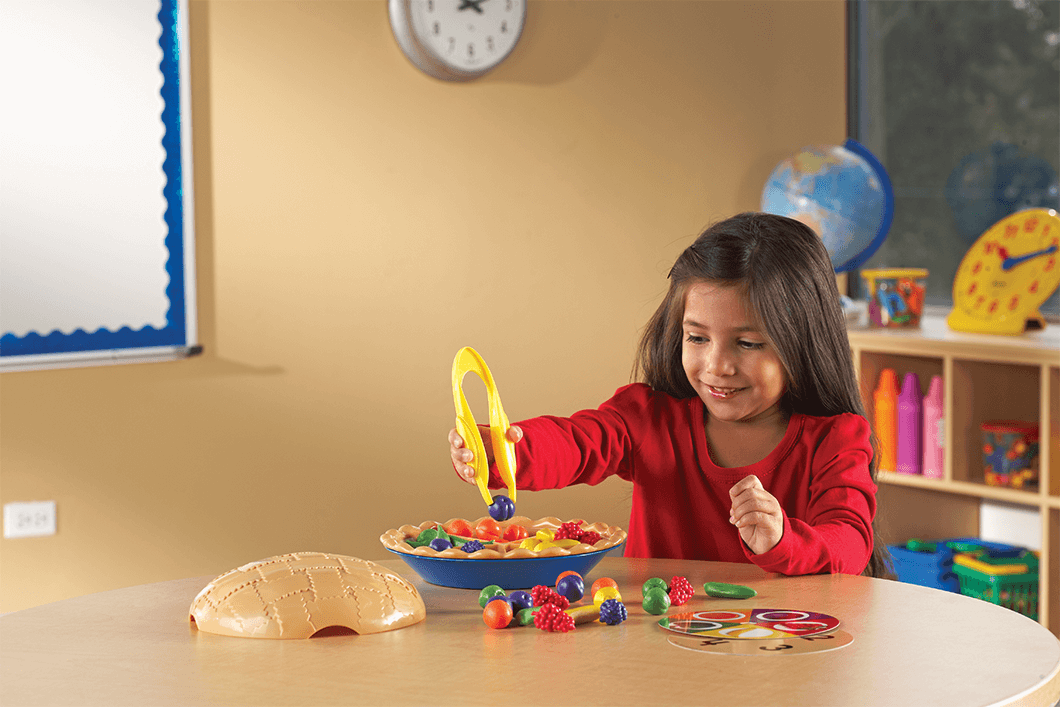
Easy ways to practise fine motor skills
- Learning Resources Posted On Jun 29, 2020 | Early Years
Fine motor skills are a big deal for little hands. Children need to master fine motor skills to do any kind of precise hand movements throughout life including fastening a button, using a knife and fork, and especially writing. We've put together some fun ideas and free activities for your child to practise fine motor skills. However before you scroll down, here is what fine motor skills are:
- the ability to make small, fine movements using the muscles in the hands and wrists;
- movements and actions that are often involve synchronised hand-eye co-ordination;
- form the foundation for many school-related tasks including reading, writing, and drawing;
- can predict how well children will perform in maths.
As children grow and develop, they get better at these small, precise movements. Give your children a helping hand by trying these fun and engaging fine motor skills activities we’ve listed here and download our free activity sheets for more easy ways to practise fine motor skills.

Image: Getty
Build hand strength
Help children build hand strength by engaging them in activities where they get stuck in – hands and all. There’s so much to do and try and anything that gets kids to use hand and wrist muscles will help. Outdoor play activities such as digging in dirt or hanging on playground equipment like monkey bars will build hand strength too.
 |
Indoors, anything that gets kids stuck in and squishing will help. Substances like pizza dough or our award-winning Playfoam provide resistance that helps strengthen the hand arches. As this article for occupational therapists explains, strong hand arches allow hand flattening and cupping and the ability to grasp objects. Playfoam is an ideal sculpting toy because it never dries out and can be used for all sorts of fun crafting activities at home. |

Image: Getty
Practise the grasp
Grasping is the ability to grab hold of something, hold it firmly, and release to let go. From age 10 months, children’s ability to grip and hold objects refines from the pincer grasp parents notice when babies start to pick up finger foods, all the way through to what experts call the Dynamic Tripod Grasp that allows children to hold and write with a pencil.
 |
There are lots of fun ways to help children practise their grasp. The chunky tweezers in our Super Sorting Pie offer enough tension to build hand strength through play, and the intuitive indents on the sides help kids get used the sensation of the pencil grasp. Fun idea: Create a fine motor sensory bin. Empty a few packets of dry lentils or rice into a shallow plastic storage container. Hide some of the fruit pieces from our Super Sorting Pie inside, and get your child hunt for them using the chunky tweezers. |
Another great tip is that any kind of activity that involves threading and lacing will help practise and refine children’s grasp. You can set up activities using items easily found around your home like these from popular UK blog, The Imagination Tree. The rainbow pasta threading necklace is an easy activity to try at home today.
Boost hand-eye coordination
Most activities need hand-eye co-ordination to be successful. From eating, to brushing hair, to catching a ball, hand-eye co-ordination is the ability to use your eyes to guide your hands to complete a task. It’s an essential part of development and affects several aspects of a child’s school career including handwriting, reading and sport.
 |
For a fun, cheap activity that can be done inside or outdoors, boil up some spaghetti and let your child snip away using child-friendly scissors (try our Trace Ace Scissor Skills Set). The action of snipping into the soft texture of spaghetti builds hand strength and hand-eye co-ordination in one activity. |
Kids love to tinker and our Gears! Gears! Gears! playsets offer hours of open-ended construction play. Constructing and manipulating the gears helps train hand-eye co-ordination in children aged 3 and up.
FREE fine motor resources
Here are more fun ideas to help your child practise fine motor skills. Try these activities and free downloads:
Activities ideas:
- Create your own monster game with Red Ted Art
- Social emotional snowman with Red Ted Art
- 10 nature crafts to try indoors
- Fun Playfoam craft ideas
Free printables:
- Fine Motor Scavenger Hunt
- Scissor skills activity sheet
- Fun tracing activity sheet
- Playfoam Pals Unicorn Magic colouring sheet
- At-home activity sheet
Looking for more hands-on ways for your child to practise their fine motor skills? Browse our Fine Motor Skills and Sensory Play section for fun buys and great gift ideas.











